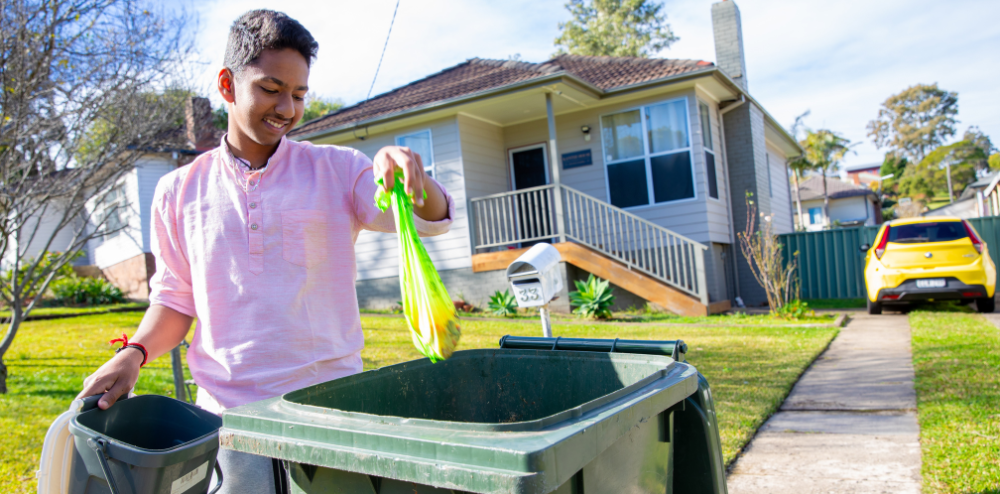Ever wondered what happens to your FOGO waste once it leaves your kerb? Wollongong City Council are taking residents on a video tour of how they collect, sort, and convert your food scraps and lawn clippings into compost material.
Wollongong City Lord Mayor Councillor Gordon Bradbery AM said that while Wollongong residents are great at FOGO-ing, there's still room for improvement.
"Earlier this year in our kerbside bin audit, we discovered that approximately 30% of waste in red bins is made up of food waste. We see this as an incredible opportunity for our residents to divert more food waste out of landfill," Cr Bradbery said.
"One of the common myths we're trying to bust, is that if you only have a little bit of food waste it doesn't matter if you use the red bin. I can tell you that even a small amount of FOGO counts. Research shows us that if everyone who lived in Wollongong made sure every little bit of food waste was put in the green-lidded bin, we'd save an additional 150kg of waste per household a year – or a total of 11,050 tonnes of food waste from going to landfill every year.
"We all have a role to play and it's important we get this right. FOGO helps save space in our landfill, which is a limited resource, it also reduces methane gas emissions and reduces our city's environmental footprint. We all can make a difference and I encourage everyone to take on the FOGO challenge today."
See here for the full journey, from the kerbside to the final product!
The City of Wollongong has been using FOGO since its launch in 2020.
The NSW Environment Protection Authority (EPA) has made changes to what can and can't go in FOGO bins. Following the EPA's release of their new FOGO guidelines, Council has responded by gradually phasing out educational materials that are out of date.
The biggest change for Wollongong residents is that Council and the EPA are saying no to cardboard and paper in FOGO. That means food should be removed from pizza boxes and they need to go in your yellow-lidded recycling bin along with takeaway packaging marketed as compostable or biodegradable.
All food waste, garden waste and compostable bin liners with the AS 4736 code and seedling logo are still accepted in FOGO.
"We're lucky to have a very engaged community who are for the most part, doing the right thing and only putting food and garden organic waste in their green-lidded bins," Cr Bradbery said.
"We have a very robust FOGO system in place here at Wollongong. We do our best to sort green bin waste before it's composted so that we can remove any contaminants such as plastic or metal. Plastic bags are our biggest problem item in FOGO, but we also sometimes see building waste dumped in FOGO bins, which is not on.
"It's a closed system. This means that your food scraps are repurposed and transformed into compost material. This compost then can be used on our city's sports fields, parks, gardens and lots of other open spaces. Every little bit counts so please keep on FOGO-ing, and if you haven't already, give FOGO a go."







